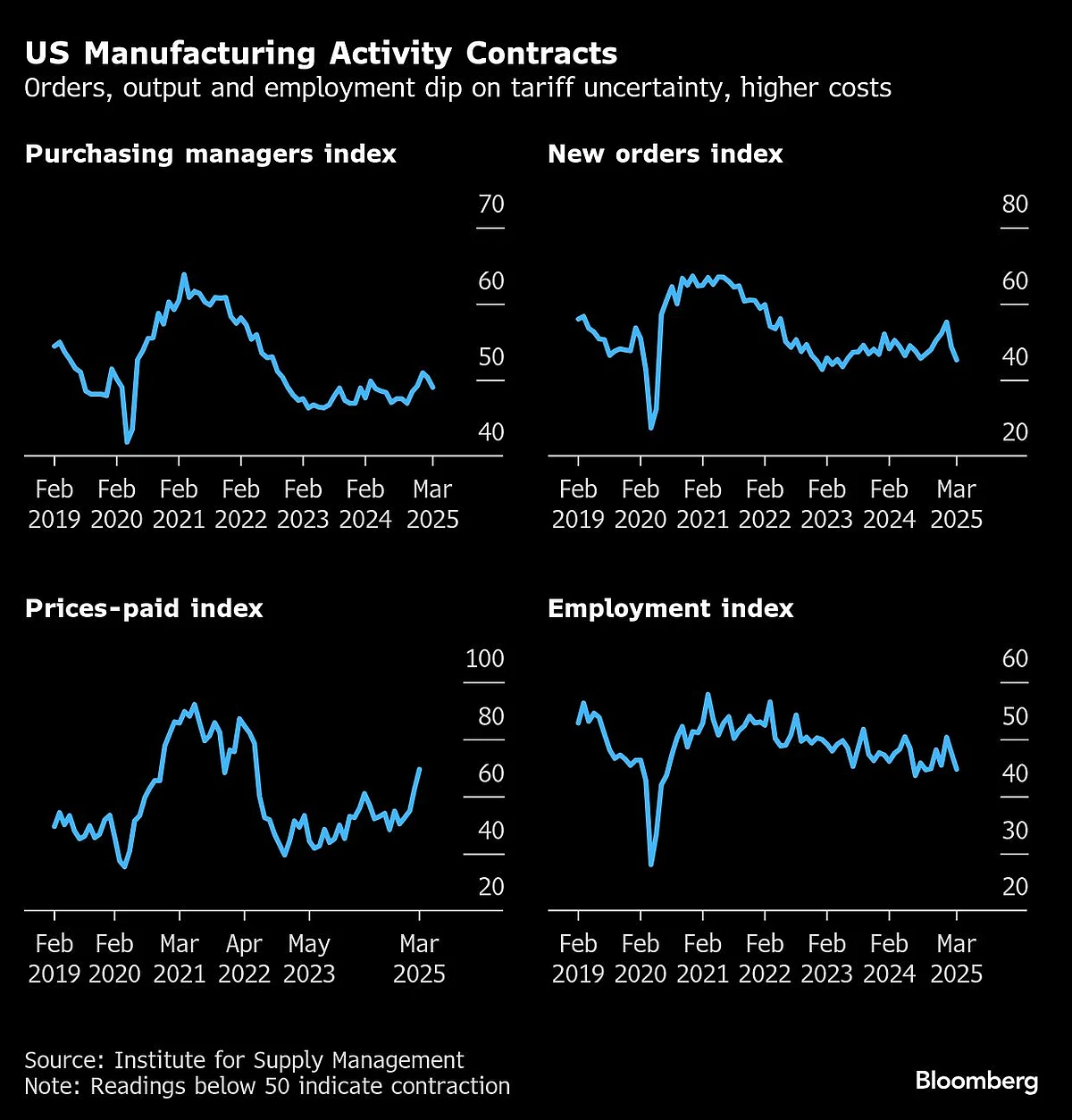US Manufacturing Activity Shrinks for First Time This Year
Along with a bigger contraction in order backlogs, the drop in bookings caused production to shrink for the first time this year.

(Bloomberg) --US factory activity contracted in March for the first time this year and prices accelerated sharply for a second month as the drumbeat of higher tariffs reverberated through the economy.
The Institute for Supply Management’s manufacturing index declined 1.3 points last month to 49, according to data released Tuesday. Readings below 50 indicate contraction and the figure was slightly weaker than the median projection in a Bloomberg survey of economists.
The group’s price measure increased to the highest since June 2022. Over the past two months, the gauge has increased 14.5 points, the most over a comparable period in four years.
The ISM index of factory orders slumped to the lowest level since May 2023. Along with a bigger contraction in order backlogs, the drop in bookings caused production to shrink for the first time this year. Factory employment contracted at the fastest pace since September.

Separate data out Tuesday from the Labor Department showed fewer job openings in February, including a decline at manufacturers.
Some companies are pausing investment plans due to the uncertainty surrounding the details of the implementation of additional tariffs. Meanwhile, a rush by firms to import ahead of the hikes boosted the ISM index of factory inventories to 53.4, the highest since October 2022, helping underpin the overall gauge.
Select ISM Industry Comments
“Complex markets saw a surge in volume buying in anticipation of 2025 being slightly better than 2024. In March, however, all markets saw a slowdown, with fear and inventory stocking to hold through a potential crisis.” — Chemical Products
“Acute shortages continue to impact supply chain continuity. Chinese restrictions on critical minerals such as germanium have caused major shortages, resulting in all supply needed in 2025 already assumed — and, not surprisingly, significant price increases as a result. Tariffs are causing minor ripples at the moment in securing supply, with purchase order terms narrowing due to uncertainties.” — Transportation Equipment
“Customers are pulling in orders due to anxiety about continued tariffs and pricing pressures.” — Computer & Electronic Products
“Business condition is deteriorating at a fast pace. Tariffs and economic uncertainty are making the current business environment challenging.” — Machinery
“New order levels have increased and are better than expected. We suspect that our customers are trying to build inventory at current prices to get ahead of expected tariff and related cost increases. We expect this surge in demand to be short-lived.” — Fabricated Metals
“No evidence of growing demand. Tariff impacts and mitigation strategies are a daily conversation.” — Electrical Equipment, Appliances & Components
“Worldwide economic instability has really begun to impact our oil and gas business.” — Petroleum & Coal Products
“Bearish market sentiment and tariff applications and costs have dominated discussions over the past month and should continue to dominate markets until a clear path forward is determined. Overall concern is whether or not demand destruction will occur with higher pricing.” — Primary Metals
The scramble to secure goods and materials from outside the country also helped drive materials prices higher. With consumer demand cooling so far this year, producers may find it difficult to pass on higher costs.
Meanwhile, the imports gauge declined 2.5 points to 50.1, indicating producer demand for foreign goods has leveled off.

